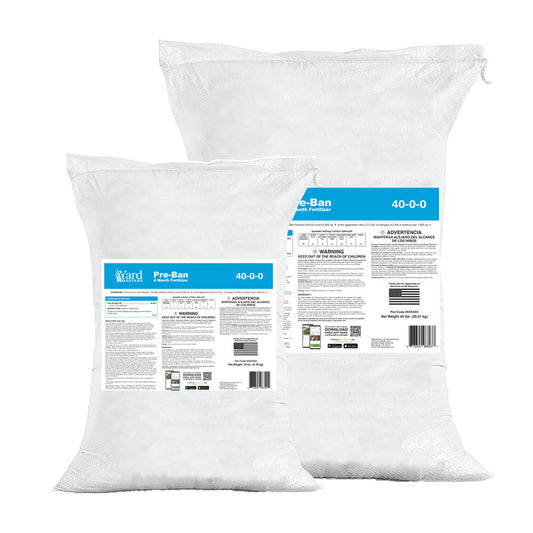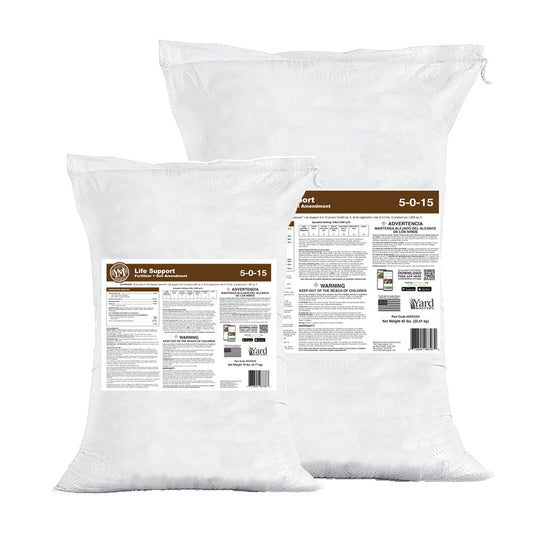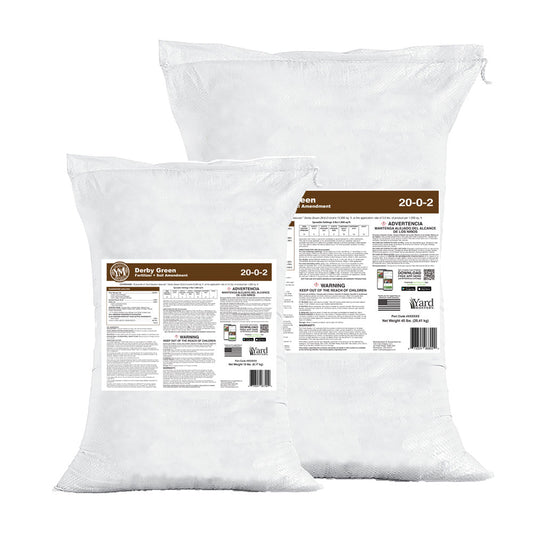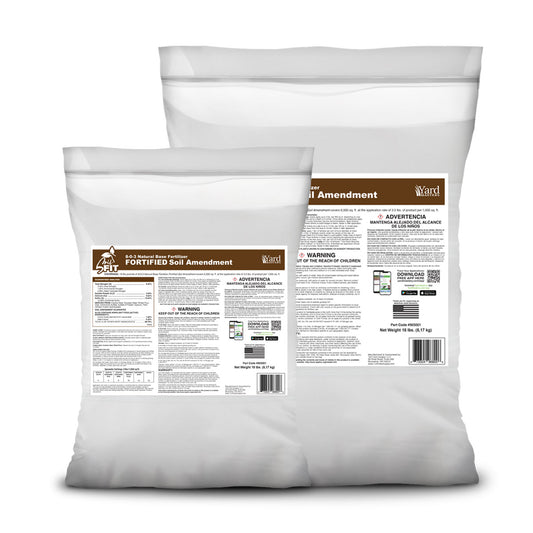
Official Spring is this week, March 20. Congratulations, you made it!
Temps are warming across the country and many of you got outside this past weekend to see your lawns for the first time in months!!
My friend Ryan Knorr is in Iowa and made a video showing what his lawn looks like coming out of winter this season so far. Another friend you all know, Tim the Grass Daddy also showed his lawn and he is WAY up in the northeast!
Check out this picture I got from our FB group - I bet a lot of you are seeing this and wondering what it is!

What those are from are field mice, also called “voles.” They are running trails all through the lawn under the snow during winter. This is very common and usually nothing that is long lasting.
I recommend that you get out there first chance you get (as long as turf is not frozen and no frost is present) and lightly rake the areas.
We want to create airflow in there and pull out a good percentage of the dead stuff.
From there, fertilize like normal - when ground temps hit 55 degrees, that is about when you will want to get started with fert.
You will find that most of the trail damage will fill back in and much of it will regrow by the time spring rains are done in May. Maybe 45 days at most and it should be thickened right back up.
If you do want to seed, you can sprinkle some in but keep in mind, no pre-emergent in those areas so that may be a tradeoff you want to consider.
Here is a podcast I did where I talk about some of these decisions on seeding and pre-emergents.
If you are new here, consider my cool season or warm season guides that help you know when to get started based on soil temps.
If you live somewhere with cool season turf (Bluegrass, Fescue, Rye) like what is pictured above, you want to start throwing down when the forsythia bloom!
If you see the redbuds and magnolia blooming, you are definitely at GO TIME!

Down into the transition zone (Charlotte, NC) where Jim K lives, you can see his cool season turf is coming into its prime. His quote that went along with this picture:
“Finished mowing for the first time this year. Double mowed @3.5" then 3" to get it even everywhere. My 3 yr old daughter came up to me as I was weed whacking and said ‘The grass looks good, Daddy.’ There's nothing better than that to put a smile on my face.”
I agree Jim, there is nothing better than when your family recognizes and appreciates your hard work! That lawn looks incredible!
Lawns Across America
That said, look at that dappled sun!
And that is one of the topics we will be covering this week on the podcast.
Growing grass in shade and what to consider when planning out a lawn strategy.

Subscribe on your chosen platform so you don’t miss an episode:
Catch it on iTunes here.
Catch it on Google Play here.
Catch it on YouTube here.
I also answer a lot of other questions in the podcast each week and I hope you will enjoy this new way I am putting out content.
Nitrogen Rates
Next, I promised we would start breaking down Nitrogen rates as the year goes on and so we will start that today. Let’s look at a familiar fertilizer we all know and love, Milorganite.
The analysis on Milorganite is 6-4-0 and those numbers represent macro-nutrients Nitrogen, Phosphorus, and Potassium, or N-P-K.

Nitrogen is the element we let dictate most of our direction since it is the macro needed in the highest quantities and also because it makes plants green - being as St Patrick’s Day was just this past weekend, we know how much we love a green lawn!
The number 6 represents the Nitrogen and means that 6% of what’s in the bag is nitrogen. Also, 4% of what’s in the bag is phosphorus.
100% of what’s in the bag is organic success! (Note: if you read the back of the bag it will tell you the rest of what’s in it!)
Now, if we know that 6% of what’s in the bag is Nitrogen then we can easily “dial up” or “dial down” the amount we apply to the lawn and dictate the results.
In general, the more nitrogen, the greener the lawn, but that’s not a license to be irresponsible, keep reading.
The next thing you need to know is that as a standard, we in the lawn care industry look at applications on a “1,000 sq ft basis.”
In other words, almost everything we do is broken down into 1,000 sq ft increments and we use that when talking about applications to the lawn. That’s why I always remind you to measure your lawn before you get started.
You will hear me say “apply ½ pound of nitrogen per 1,000 sq ft” in my videos and guides.
How Much To Apply
Now that we know that 6% of everything in the bag is Nitrogen and that we use 1,000 sq ft as our standard application area, we can do some calculations on how much nitrogen to apply. But how much do we need?
From my experience, ½ lb of Nitrogen per 1,000 sq ft is a good place to start, and you should rarely have to exceed 1 lb of Nitrogen per 1,000 sq ft in a single application.
If you think your lawn needs more than this, I recommend more frequent spoon feedings rather than heavy apps just hammering away (get the lawn plan for exact details).

The Math
Remember, 6% of everything in the bag is Nitrogen. I know you just see lots of black prills, but overall, when you put a bunch of those together and send them off to a lab to be analyzed, 6% of those prills deliver Nitrogen (how’d you like to run that lab?).
From here we can then choose how much Milorganite to throw down across each 1,000 sq ft area and we will know our Nitrogen rate.
Remember, we want somewhere between ½ and 1 lb of Nitrogen per 1,000 sq ft. This is where the fun math comes in. Let’s look at some “application rates” and what they break down to:
If you apply 10 lbs of Milorganite per 1,000 sq ft, you will be delivering .6 lbs of Nitrogen.
10 x .06 = .6
10 lbs of Milo applied to 1,000 sq ft
6% Nitrogen
Delivers .6 lbs of Nitrogen - this is just over ½ lb
If you apply 12 lbs of Milorganite per 1,000 sq ft, you will be delivering .72 lbs of Nitrogen.
12 x .06 = .72
12 lbs of Milo applied to 1,000 sq ft
6% Nitrogen
Delivers .72 lbs of Nitrogen - this is just under ¾ lb
You see, with “fertilizer only” products like Milorganite, you can choose how hard or slow you want to push it. If you are dealing with the field mouse damage in your lawn like we saw above, you may want to push in a little more N right from the start just to get things moving a little quicker in spring.
Go with that 12 lbs per 1,000 sq ft rate to start. With cool season turf, this is just fine to do, especially with nourishing spring rains providing even more growth stimulation.
You should also plan to mow twice per week or even three times per week to REALLY push your turf to spread fat and/or wide and deep.
If you have that dappled sun fescue lawn like we see in Jim’s picture above, you may want to back down the nitrogen a little. That’s because nitrogen also makes the grass grow faster and faster growth requires more sunlight.
Here in the first days of spring, our overcast days are still quite short making that shade challenge even more challenging. Of course, no leaves on the trees yet does allow more sun that way… but still, not a good idea to push turf in the shade.
Best to let the grass come in a little slower in areas like that and instead, push the bio-stimulants to encourage greater root mass.
Putting YOU To The Test
One more little bit of info and it’s a quiz. Go watch my video on how to calibrate any lawn spreader again.
You will see that as a test I used Milorganite and I used a rate of 3 lbs/1,000 sq ft.
I said that I used this small amount because it’s virtually inconsequential to the lawn and allows me to practice without fear of harming the lawn or anything like that.
So tell me, what is the amount of Nitrogen going down in that 3 lbs/1,000 sq ft application that I did?
-----------------------------
Answer: .18 lbs/N/1,000 sq ft (3 x .06 = .18) Not even ¼ lb/N/1,000 sq ft.
-----------------------------
Not enough to really do much of anything, but it did allow me to learn how to calibrate that spreader and I hope you learned something there too!
I'll see you in the lawn!
- AL







